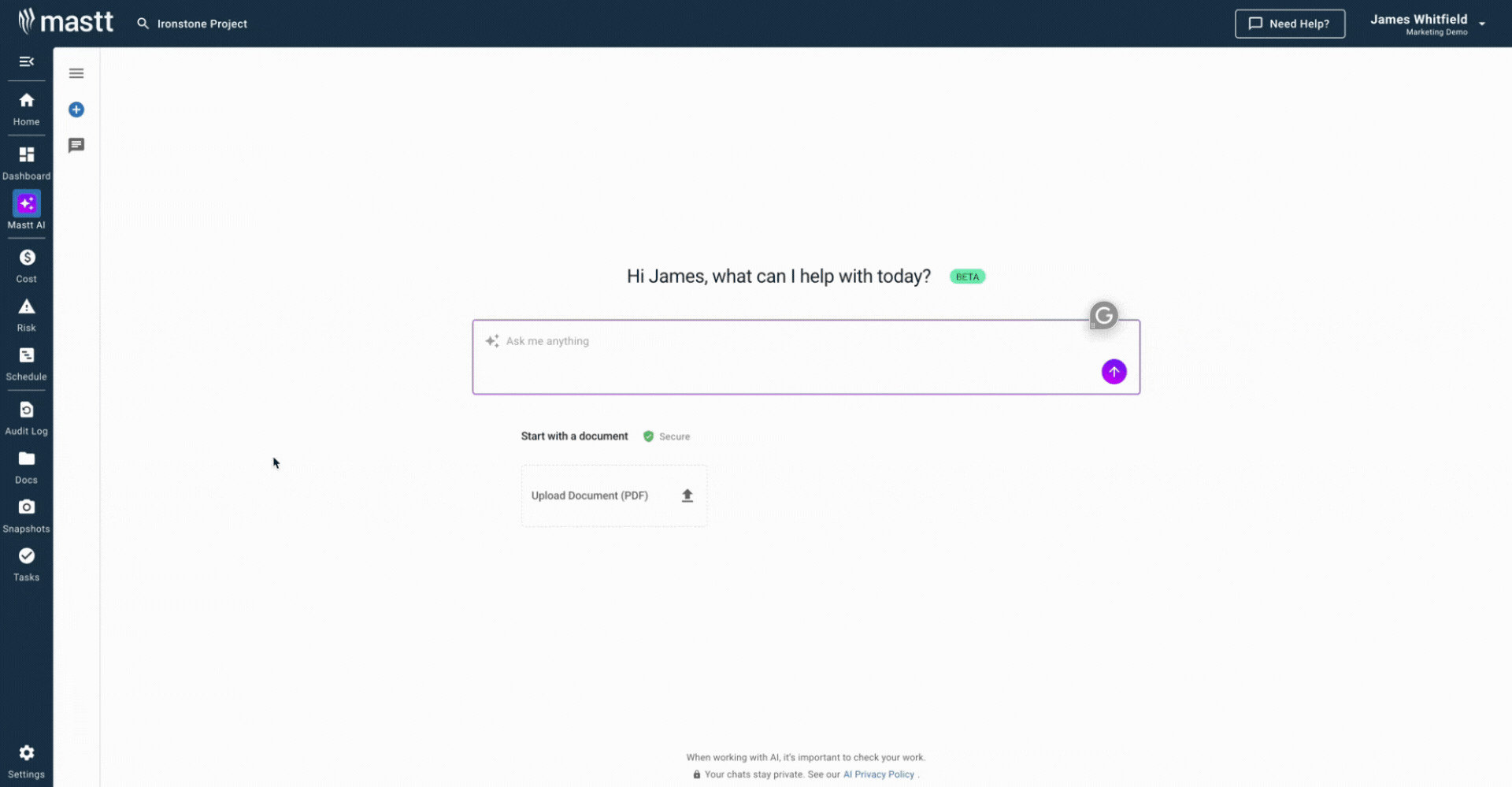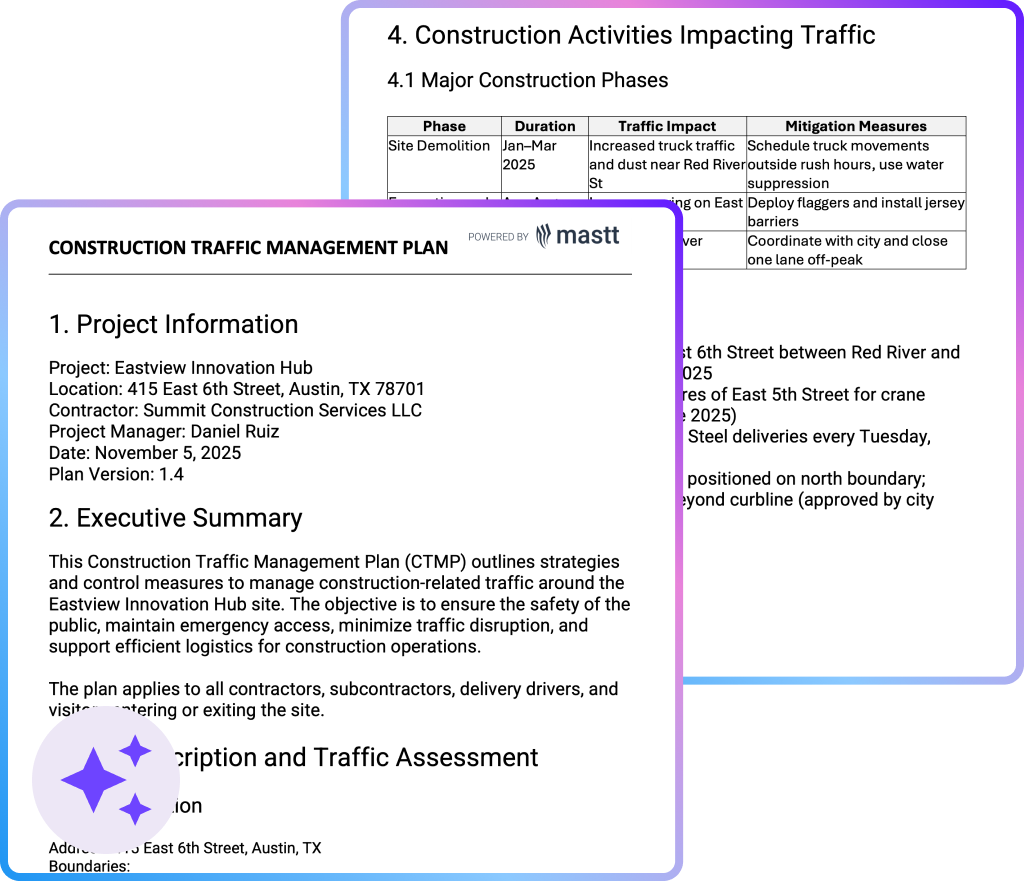What is a Construction Traffic Management Plan?
A construction traffic management plan is a regulatory document outlining how traffic will be managed during building works. It addresses vehicle movements, pedestrian safety, and road network impacts throughout construction phases from demolition through to completion.
CTMPs are mandatory for most Development Applications in Sydney and across NSW councils. They demonstrate how builders will minimise disruption to surrounding roads, footpaths, and public transport. The plan becomes a contractually binding document once council approves your DA submission.
Transport for NSW and local councils require these plans before issuing Construction Certificates. Without an approved CTMP, projects cannot legally commence. The document protects workers, pedestrians, and motorists while ensuring construction proceeds efficiently.
What's Included in a CTMP?
The CTMP contains technical and operational details demonstrating safe traffic management throughout all construction stages. It provides councils with evidence that vehicle movements, pedestrian access, and road impacts have been properly assessed and mitigated.
Typical components of a construction management plan include:
- Project identification details: Development address, DA number, principal contractor details, project duration, and construction hours.
- Site location analysis: Existing road network conditions, traffic volumes, pedestrian flows, cyclist routes, and public transport services.
- Construction methodology: Work staging sequences, demolition activities, excavation phases, and building erection timelines affecting traffic patterns.
- Vehicle movement plan: Delivery schedules, truck types and frequencies, haulage routes, site access points, and egress arrangements.
- Swept path analysis: Technical diagrams showing construction vehicles can safely enter, manoeuvre within, and exit the site boundaries.
- Pedestrian management measures: Footpath diversions, temporary walkways, protective hoarding, construction signage, and safe crossing points near the worksite.
- Traffic control arrangements: Works zones, road closures, detours, Traffic Guidance Schemes (TGS), and temporary traffic signal modifications.
- Parking management strategy: Construction worker parking locations, visitor provisions, and impacts on existing on-street parking availability.
- Traffic staging plans: Functional Layout Plans (FLPs) showing site configurations for each major construction phase with control measure locations.
- Road safety audit: Independent assessment identifying potential hazards and recommending additional safety treatments where risks remain elevated.
- Emergency access provisions: Maintaining ambulance, fire brigade, and police access throughout construction despite temporary road modifications.
💡 Pro Tip: Include photographs of the existing site showing current traffic conditions. Councils process applications faster when they can visualise how your proposed controls fit the actual street environment.
Why Construction Sites Need Traffic Management Plans
Construction activities inevitably disrupt normal traffic patterns, creating safety risks that require formal management strategies. A well-prepared CTMP protects everyone while ensuring regulatory compliance and avoiding costly delays in project approvals.
Traffic management planning delivers measurable benefits like:
- Council approval certainty: Satisfying DA conditions prevents planning refusals and eliminates resubmission cycles that delay Construction Certificate issue.
- Safety compliance: Meeting Work Health and Safety Regulation 2017 obligations protects workers and public from vehicle interaction incidents.
- Penalty avoidance: Preventing fines from Transport for NSW or council inspectors who find non-compliant traffic arrangements on site.
- Neighbour relations: Demonstrating consideration for local residents reduces complaints about construction vehicle movements and access disruptions.
- Delivery coordination: Structured scheduling prevents multiple trucks arriving simultaneously, eliminating road blockages and traffic congestion problems.
- Legal defensibility: Documented traffic management provides evidence of due diligence if incidents occur despite control measures being implemented.
- Subcontractor clarity: All trades understand access arrangements, parking locations, and delivery procedures before mobilising to the worksite.
- Emergency preparedness: Pre-planned emergency vehicle access prevents critical delays when ambulances or fire services need site entry.
- Cost predictability: Avoiding traffic management penalties and resubmission fees keeps projects within budget during planning and construction phases.
- Stakeholder confidence: Professional CTMP documentation demonstrates project management competence to lenders, insurers, and joint venture partners.
For example, sites without proper traffic management create street blockages triggering council enforcement action and work stoppages. A well-prepared CTMP prevents these disruptions. It coordinates deliveries, protects pedestrians, and maintains public road access throughout construction.
How to Develop a Construction Traffic Control Plan
Developing a construction traffic control plan requires systematic analysis of site conditions, construction methodology, and regulatory requirements. The process combines technical engineering with practical construction logistics across multiple assessment stages.
Follow these steps to prepare council-compliant CTMPs:
- Review DA conditions: Examine planning approval carefully for specific CTMP requirements including council standards, TfNSW guidelines, and submission deadlines.
- Conduct site inspection: Visit the location during peak traffic hours to observe existing vehicle volumes, pedestrian movements, and parking utilisation patterns.
- Define construction methodology: Document work staging sequences, vehicle types required, delivery frequencies, and maximum truck dimensions entering the site.
- Develop haulage routes: Map approved heavy vehicle routes from arterial roads to the site, avoiding local streets, schools, and residential areas.
- Prepare swept path analysis: Model construction vehicles navigating site entry, internal circulation, and exit movements using AutoTURN or similar software.
- Design pedestrian treatments: Plan footpath diversions, temporary walkways, protective hoarding, and safe crossing points maintaining accessibility standards.
- Create traffic staging plans: Develop FLPs and TGS following Australian Standard AS 1742.3 requirements.
- Conduct road safety audit: Engage independent auditor to review plans and identify hazards requiring additional mitigation before council submission.
- Submit and refine: Lodge CTMP with assigned planner, respond to council feedback, and revise documentation until formal approval is granted.
💡 Pro Tip: Request a pre-lodgement meeting with council's traffic engineer before formal CTMP submission. A 30-minute discussion often identifies issues that would otherwise require full resubmission cycles.
Generate Construction Traffic Management Plans with Mastt AI
Mastt AI eliminates hours spent formatting CTMP documents from blank templates or adapting old project files. Instead of wrestling with complex report structures, you generate tailored frameworks matching your site's specific conditions.
Here's what Mastt AI delivers for construction traffic planning:
🚀 Generate report structures instantly: Create complete CTMP frameworks with executive summaries, methodology sections, and all required technical components.
📂 Upload existing documents: Load site surveys, architectural plans, or previous traffic studies, and Mastt AI helps extract relevant information for integration.
📑 Export in multiple formats: Download structured reports in Word for customisation or convert to PDF online for council submissions.
⚡ Customise for your location: Describe your site in Sydney, Melbourne, Brisbane, or regional centres, and AI adapts content for local council requirements.
🎯 Refine through conversation: Chat with AI to add staging details, adjust vehicle frequencies, or modify pedestrian treatments until documentation matches exactly.
Mastt AI applies construction industry knowledge to recommend appropriate CTMP structures satisfying Transport for NSW and council standards. Every conversation stays private in your secure workspace where you control how documents are created and shared.
Getting started takes three straightforward steps:
- Describe your project: Request something like "create CTMP for mixed-use development with tower crane operations" or "generate traffic plan for commercial fitout Sydney CBD".
- Refine with AI: Adjust sections through natural conversation, adding site-specific details about access constraints or staging requirements.
- Export and finalise: Download the structured report ready for traffic engineer review and technical drawing preparation.
👉 Visit the Mastt Help Center to explore CTMP creation capabilities and start generating professional documentation today.

Who Needs a Construction Traffic Management Plan?
Traffic engineers typically prepare CTMPs due to technical requirements including swept path modelling and traffic impact assessments. However, project managers, developers, and builders all need CTMPs for different purposes throughout the development and construction process.
✅ Developers and Project Owners: Commission CTMP preparation as mandatory DA submission requirements, coordinating between architects, traffic consultants, and council planners.
✅ Project Managers: Supply construction methodology details including work staging, delivery schedules, and crane operations that inform vehicle movement plans.
✅ Traffic Engineers and Consultants: Conduct technical analysis including swept path assessments, traffic volume studies, and prepare council-compliant documentation.
✅ General Contractors and Builders: Provide construction sequencing information, subcontractor coordination details, and implement approved traffic management measures on site.
✅ Principal Contractors: Ensure CTMP implementation across all trades, maintain compliance during construction, and update plans when site conditions change.
✅ Construction Managers: Coordinate daily traffic management including delivery timing, works zone usage, and pedestrian protection around active worksites.
✅ Town Planners: Review CTMP adequacy against DA conditions, liaise with council assessment officers, and manage submission documentation.
✅ Commercial Managers: Engage traffic consultants, manage CTMP budgets, and ensure contract requirements for traffic management documentation are satisfied.
✅ Small to Medium Builders: Often engage traffic management companies providing combined CTMP preparation and on-site traffic control personnel services.
💡 Pro Tip: Engage your traffic engineer during schematic design, not after DAs are lodged. A $2,500 swept path review at concept stage prevents $15,000+ redesign fees when council rejects site access arrangements six months later.
When Do You Need a Traffic Management Plan for Construction Sites?
You need a construction site traffic management plan when Development Application conditions specifically require one or when construction activities will impact public roads and footpaths. Council requirements vary significantly across Sydney, Melbourne, Brisbane, and regional areas based on project scale and location.
CTMPs become mandatory in these situations:
- Larger construction projects: Developments triggering Planning Permit conditions where councils assess traffic impacts as significant enough to require formal management.
- Basement excavation and bulk earthworks: Projects generating substantial spoil removal and concrete deliveries that affect street capacity and local traffic.
- Sites on constrained streets: Construction on narrow local roads or busy arterial routes where vehicle movements create safety and access concerns.
- Crane operations over public land: Tower cranes swinging across footpaths or roads require formal traffic management approvals from councils.
- Road closure requirements: Any construction needing temporary street closures, lane reductions, or works zones on public roads or footpaths.
- Council DA conditions: When planning approval explicitly lists CTMP preparation as a mandatory condition before Construction Certificate issue.
💡 Pro Tip: Each council has different CTMP triggers and requirements. Check your specific DA conditions or contact council's traffic assessment team early, assuming you don't need one often delays projects by months.
Common Challenges with Generic Construction Site Traffic Management Plan in PDFs
Manual CTMP preparation using Word documents or static PDFs creates significant problems when site conditions evolve during construction. Generic templates downloaded online rarely satisfy council-specific requirements, leading to resubmission cycles that delay Construction Certificate approvals.
Common challenges include:
⚠️ Outdated council requirements: Free CTMP templates reference superseded guidelines, creating compliance gaps when Transport for NSW updated standards in 2021.
⚠️ Missing technical analysis: Downloaded formats lack swept path diagrams, traffic volume studies, or road safety audits councils mandate for approval.
⚠️ Generic content inadequacy: One-size-fits-all templates don't address site-specific constraints like narrow streets, heritage overlays, or public transport conflicts.
⚠️ Version control confusion: Multiple consultants editing separate files creates inconsistent staging plans across demolition, excavation, and construction phases.
⚠️ Drawing coordination problems: CTMP reports don't align with architectural plans or engineering drawings, causing confusion during council assessment.
⚠️ Inflexible PDF limitations: Static documents become obsolete when staging sequences change but updates require completely regenerating traffic control drawings.
⚠️ Consultation costs escalate: Simple CTMP updates requiring traffic engineer involvement cost $1,500-$3,000 even for minor staging adjustments.
⚠️ Council-specific variations: Sydney councils have different submission formats from Melbourne or Brisbane, but generic templates ignore regional requirements.
⚠️ Integration difficulties: Standalone CTMP documents don't link with construction schedules, risk registers, or safety management plans already prepared.
⚠️ No implementation tracking: PDF formats provide no mechanism for recording daily compliance with approved traffic management arrangements during construction.
Even editable Word templates require extensive customisation for project-specific haulage routes, swept path configurations, and council-mandated consultation processes that differ significantly across jurisdictions.
Simplify Construction Traffic Planning with Mastt AI
Traffic management planning shouldn't mean endless consultant meetings and lengthy resubmission cycles when council requests modifications. Mastt AI generates structured CTMP documentation in seconds, adapting to site-specific conditions across Sydney, Melbourne, Brisbane, and regional centres.
Professional traffic management begins with proper documentation. Mastt AI helps developers, project managers, and builders create compliant CTMP structures faster than traditional consultant-dependent processes.
👉 Try Mastt AI today and generate your construction traffic management plan ready for traffic engineer review and council submission.










